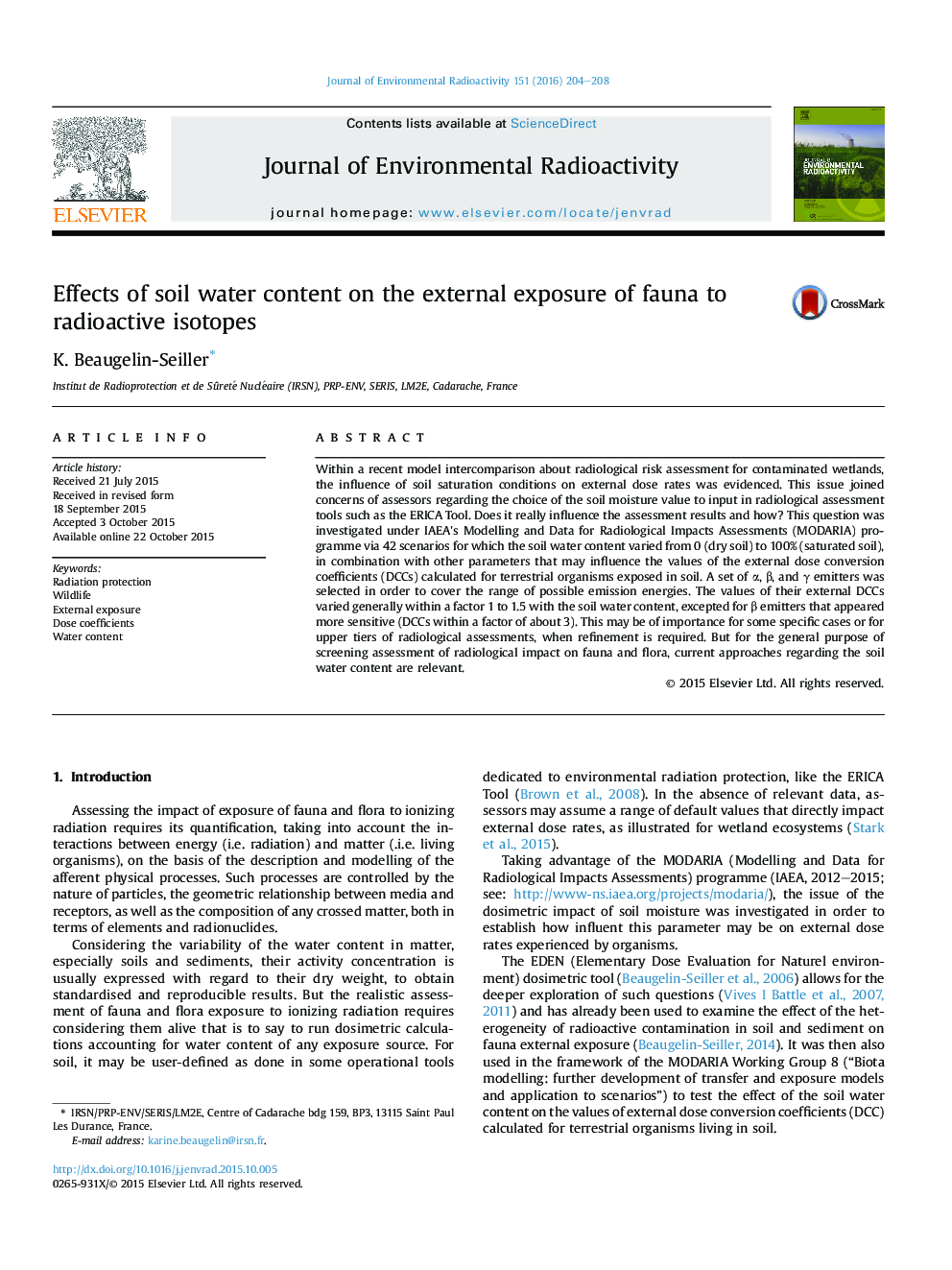| Article ID | Journal | Published Year | Pages | File Type |
|---|---|---|---|---|
| 10686611 | Journal of Environmental Radioactivity | 2016 | 5 Pages |
Abstract
Within a recent model intercomparison about radiological risk assessment for contaminated wetlands, the influence of soil saturation conditions on external dose rates was evidenced. This issue joined concerns of assessors regarding the choice of the soil moisture value to input in radiological assessment tools such as the ERICA Tool. Does it really influence the assessment results and how? This question was investigated under IAEA's Modelling and Data for Radiological Impacts Assessments (MODARIA) programme via 42 scenarios for which the soil water content varied from 0 (dry soil) to 100% (saturated soil), in combination with other parameters that may influence the values of the external dose conversion coefficients (DCCs) calculated for terrestrial organisms exposed in soil. A set of α, β, and γ emitters was selected in order to cover the range of possible emission energies. The values of their external DCCs varied generally within a factor 1 to 1.5 with the soil water content, excepted for β emitters that appeared more sensitive (DCCs within a factor of about 3). This may be of importance for some specific cases or for upper tiers of radiological assessments, when refinement is required. But for the general purpose of screening assessment of radiological impact on fauna and flora, current approaches regarding the soil water content are relevant.
Related Topics
Physical Sciences and Engineering
Energy
Nuclear Energy and Engineering
Authors
K. Beaugelin-Seiller,
